Who's the King of TV for 4K TVs in 2022? Spoiler alert. It's Sony. That's who. Who says? The panel of judges at this year's 4K TV Shootout event; that's who. But I'm getting ahead of myself...
For the 18th time in 19 years, A/V retailer Value Electronics is hosting the nearly almost always annual TV shootout event. I say nearly almost always annual because that pesky COVID19 pandemic cancelled the 2020 shootout event. But other than that, there has been a TV shootout every year since 2004. The TV shootout pits the top TVs against each other in a Battle Royale. First the TVs are brought into a room together, calibrated for their maximum picture quality, then judged by a panel of experts on their performance. The top performer is crowned the "King of TV" and that maker of that TV gets an award and bragging rights until the next trip around the sun.
This year, the event was held at the swanky "Company" building across the street from Grand Central Station in New York City. This year's contenders include TVs from LG, Samsung and Sony. The underlying TV technologies used in each set runs the gamut with LG contributing two OLED TVs, Samsung contributing a QD (Quantum Dot) OLED TV and two LED/LCD TVs and Sony contributing a QD OLED TV and and two LED/LCD TVs. This year's event was split into two different parts: Part I (4K TV) was held yesterday (July 30) and included five 4K TVs. Results of that competition are highlighted below. Part II is being held today (July 31) and will feature three 8K TVs.
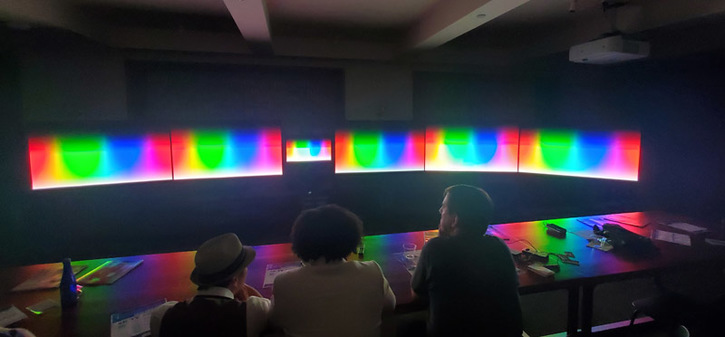
For the 4K TV battle, the following five TVs were in the spotlight, all in the 65-inch size:
For reference purposes, Sony's Professional Broadcast Video Monitor, the 32-inch BVMHX310, was also in the room. The BVMHX310 is a dual cell LCD monitor which sells for about $35,000 and is considered the reference for color accuracy. Considering this is the reference display used by most Hollywood studios to grade their content for consumer video, it's probably a good display to use to gauge other displays for their performance.
Over the course of about six hours, all five TVs (plus the reference monitor) were fed a series of video signals: test patterns, 4K, HD and SD video clips and still images. The tests were broken up into three categories: SDR (Standard Dynamic Range) Day Mode, SDR Reference Mode and HDR Reference Mode, each focusing on different areas of picture performance in different room lighting conditions.
As in previous years, the OLED (Organic Light Emitting Diode) TVs out-performed the LED/LCD models by a fairly wide margin in most of the tests, though I have to say the performance gap is definitely getting narrower. While skin tones were slightly paler and colors slightly less saturated on the Sony and Samsung LED/LCD models, this was only evident in direct comparison to the OLED models. Looking at any of the five sets on its own, one would be hard-pressed to find anything to hate in the picture quality, and there was a lot to love. The LED/LCD models were still noticeably brighter and punchier than the OLEDs on most content, so if you watch TVs with the lights on, this is something to consider. But when the lights went down, the OLED picture performance advantages became clear.
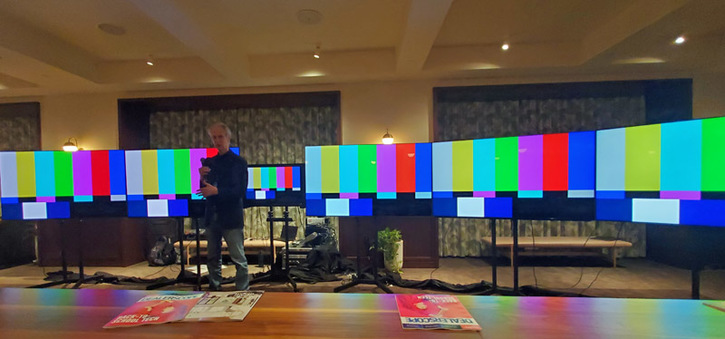
In previous years, LG had a clear advantage in the competition because they were the only makers of OLED panels. Even last year's 4K TV shootout winner, the Sony A90J, featured an OLED panel manufactured by LG Display. So technically LG panels took both first and second place in 2021. But this year, Samsung has returned to large screen OLED panel manufacturing with their Quantum Dot (QD) OLED panel.
LG's OLED panel uses a white OLED pixel which then goes through a color filter to create red, green and blue sub-pixels (along with a white sub-pixel for additional brightness). Samsung's QD OLED panel starts with a blue OLED pixel which passes through a quantum dot layer to create red, green and blue sub-pixels. Samsung claims its QD OLED panel is currently capable of higher overall brightness than LG's panel and this claim was confimed in the measurements. Sony doesn't actually make OLED panels, but it uses panels from LG in some of its TVs and now also uses Samsung QD OLED panels in other models. Sony's A95K OLED TV uses Samsung's QD OLED panel.
Ladies and Gentlemen, Start Your TVs
SDR Day Mode tested the TVs using standard definition and high definition content with some ambient lights on in the room. This included 480i (standard definition) and 1080i (high definition) interlaced video content. These tests were designed to show how well (or how poorly) these TVs handle less-than-perfect content as we'd currently see on OTA TV channels, cable and satellite broadcasts. The lights were left on for these tests to simulate how most people actually watch TV most of the time. In these tests, even though the LED/LCD TVs were capable of higher peak and overall brightness, the three OLED TVs still stood out as the top performers.
All five displays did a pretty good job at converting the interlaced content into a progressive video signal, though the LG OLED oddly could not lock to a low quality 480i clip of a hockey game. The LG also struggled a bit in picture uniformity, though it out-performed both of the LED/LCD sets in these tests. In the SDR Day Mode category, we saw the greatest variations in judge's scoring. The Sony QD OLED took the win with an overall average score of 9.3 out of 10. The Samsung QD OLED took second place with 8.3 and the LG OLED took 3rd with a 7.0.
Moving on to SDR Reference Mode, tests here included higher quality content in a darkened room. In the darker room, the performance gap between the OLED TVs and LED/LCD TVs widened. Here the artifacts of backlit TVs like picture uniformity and haloing (bright outlines around bright images) were more apparent. Also, in the SDR reference tests, the three OLED TVs scored extremely closely. The Sony QD OLED received the highest score from the judges with 8.8 out of 10. The LG came in second with 8.5 and the Samsung QD OLED placed third with 8.2 The SDR tests did not include any HDR (High Dynamic Range) material. That would be used in the final section of the test.
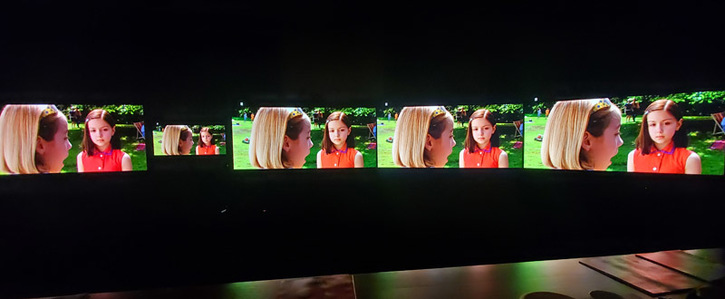
The final section of testing (HDR Reference Mode) looked at the finest native 4K content available - that with High Dynamic Range. HDR is what really sets 4K TVs apart from 1080p TVs. It's not just more pixels, but better pixels. HDR offers a much wider range of color brightness compared to SDR and this is where the better 4K TVs can really shine.
As part of the HDR Reference Mode tests, the TVs were fed 4K HDR signals that exceeded their native HDR capabilities. Most current OLED TVs reach peak brightness levels of somewhere between 800 and 1000 nits. LED/LCD TVs can usually get a bit brighter, but not much. So if these TVs receive HDR content that is supposed to peak at 4,000 nits, they need to include some sort of processing to handle that. The process of mapping this HDR content into the brightness available to each specific TV is called "tone mapping" and some TVs handle that better than others. As with the other tests, the OLEDs performed better than the LED/LCD models overall: the Sony QD OLED won the category with a score of 8.6, Samsung was in second at 8.5 and LG placed third with 8.4 out of 10.
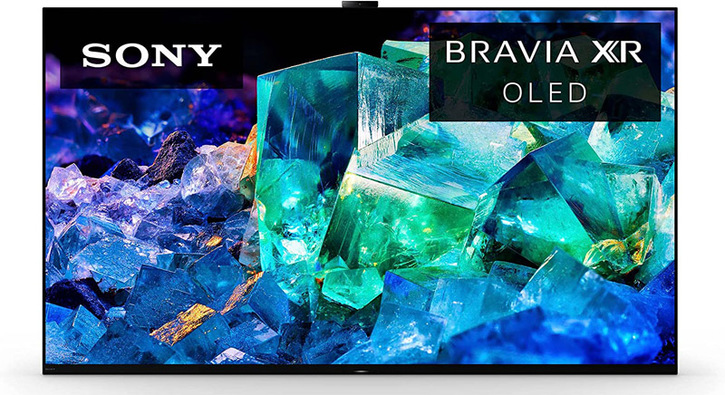
So the final results of the 2022 TV shootout placed the Sony XR-A95K Master Series 4K QD OLED TV in first place with a score of 8.8 out of 10. The Samsung S95B QD-OLED came in second with 8.4 and the LG G2 Gallery Series OLED TV placed third with an overall score of 8.1. The results were close, particularly on tests using higher quality content in darker rooms. This is where all of the OLED TVs truly shined. Any one of those would make an excellent display choice for HD and 4K content.
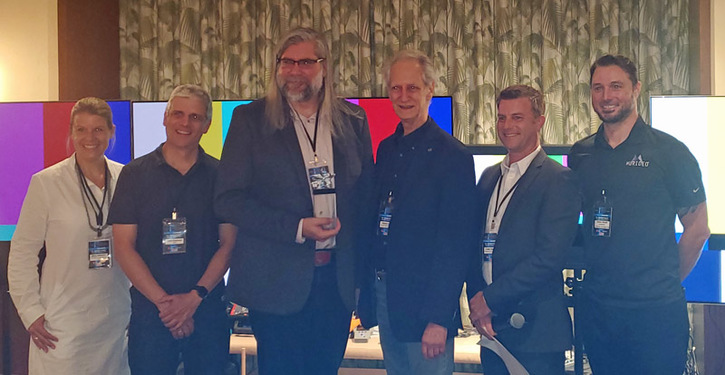
Check out the Top 3 4K TVs in the 2022 TV Shootout:
Overall it was another great event, hosted by Value Electronics and Dealerscope and MCed by the inimitable Caleb Denison of Digital Trends. OLED TVs still clearly outperform LED/LCD sets in most picture quality measurements but the latest LCD sets lit by hundreds of MiniLED elements are closing the performance gap. It's great to see Samsung getting back into OLED TV manufacturing as this should provide LG with additional incentive to step up their game even further.
The 2022 TV Shootout continues today with the 8K TV competition. Stop back by for the results of that competition and some additional details on the overall event.
*Note: average scores were updated on August 1 after we received the final scorecard from Value Electronics. Results did not change significantly in any category.
Related: